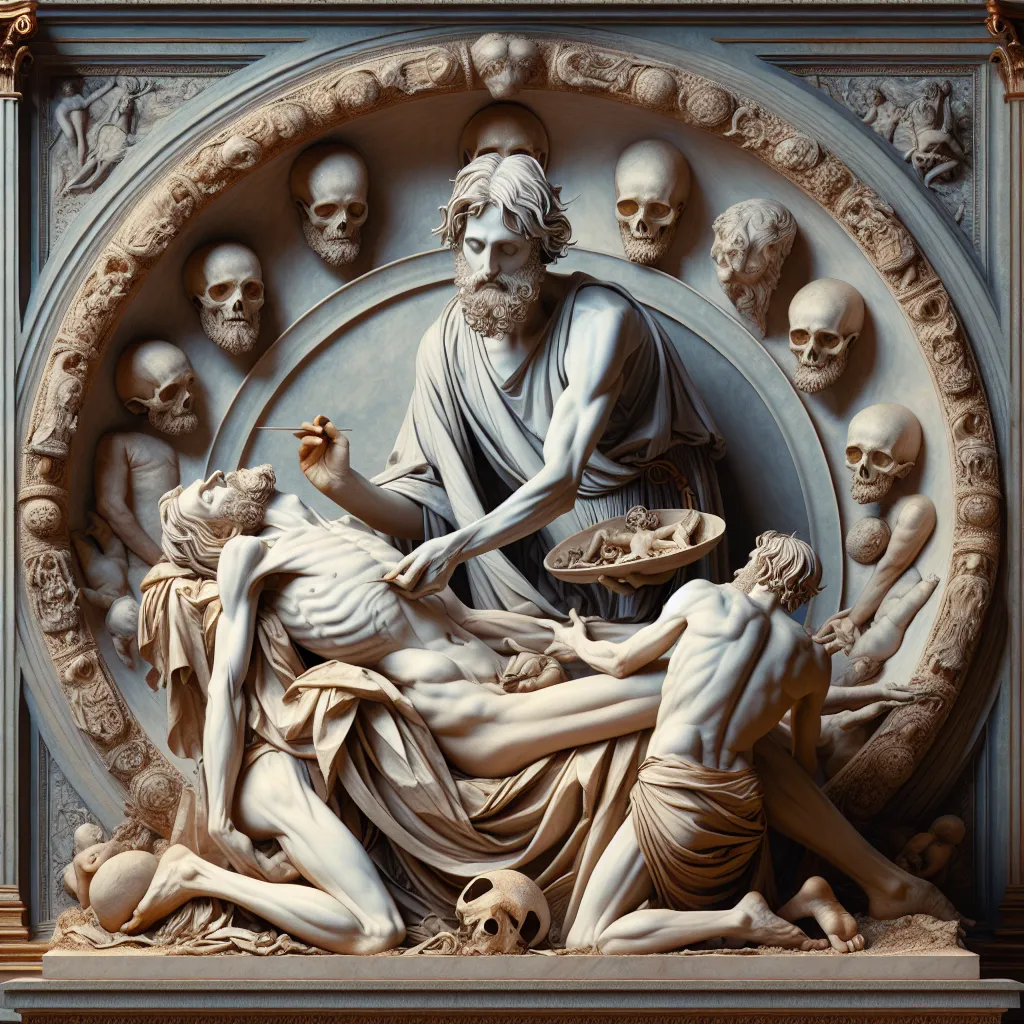
- Published on
- Authors

- Name
- You
Dying and Beyond: Ram Dass Views on Death and the Afterlife
The mysterious veil of death has always been a topic of great intrigue, fear, and speculation. Ram Dass, a spiritual teacher and former Harvard psychology professor turned mystic, offers a soothing balm to the existential angst that surrounds the concept of death. His views are a harmonious blend of science and mystical wisdom, often providing comfort and profound insight to those contemplating the end of life.
Introduction to Ram Dass
Ram Dass, born Richard Alpert, embarked on a transformative journey that led him from the empirical halls of academia to the spiritually rich landscapes of India. He found enlightenment in the teachings of his guru, Neem Karoli Baba, and emerged as a beacon of spiritual wisdom. His teachings are imbued with a deep understanding of consciousness, compassion, and the continuity of the soul.
The Science of Consciousness and Death
At the heart of Ram Dass’s teachings is the understanding that consciousness transcends the physical body. Let's dig into the scientific perspective:
| Concept | Scientific Perspective | Mystical Perspective |
|---|---|---|
| Consciousness | A product of brain activity, yet still not fully understood by scientists | A fundamental aspect of the Universe, continuous and indestructible |
| Death | The cessation of biological functions | A transition or transformation rather than an end |
| Afterlife | Largely speculative, with near-death experiences offering some insights | An assured continuity of the soul experiencing new planes of existence |
Quantum Mechanics: The Bridge Between Life and Death
Quantum mechanics, the frontier of modern physics, suggests that consciousness could play a central role in the fabric of reality. The idea of wave-function collapse, where matter exists in multiple states until observed, hints at the possibility that our conscious experience doesn’t simply vanish upon death but transforms.
Dr. Stuart Hameroff and Sir Roger Penrose's Orch-OR (Orchestrated Objective Reduction) theory posits that consciousness resides in quantum microtubules within brain neurons. This theory aligns surprisingly well with mystical views, suggesting that our essence could continue in a different quantum state when our physical bodies perish.
Ram Dass Mystical Teachings on Death and the Afterlife
Ram Dass speaks of death with an almost childlike acceptance and curiosity. He views life and death as different chapters in the same book, seamlessly transitioning from one to the other.
Death as a Mere Change of Form:
- To Ram Dass, dying is akin to taking off a tight shoe. The soul is liberated from the constraints of the physical body and moves onto a higher plane of existence. This view eradicates the fear of death, presenting it as a natural and necessary progression.
The Continuity of the Soul:
- Influenced by Eastern philosophies, Ram Dass believes in the indestructibility of the soul. Death is not the annihilation of the self but a transformative journey where learning and evolution continue. This is a comforting perspective that sees souls reunited with loved ones and infinitely growing in understanding and compassion.
Experiencing the Afterlife:
- Ram Dass speaks about the afterlife as a journey through realms of consciousness. Echoing the Tibetan Book of the Dead, he describes multiple layers of reality that the soul navigates after physical death, akin to a traveler exploring new, spectacular landscapes.
Practical Wisdom for Embracing Death
Ram Dass offers practical wisdom for those at the threshold of death or grieving a loss:
- Be Present: Embrace the present moment, shedding fears of future uncertainties.
- Cultivate Love: Love acts as a bridging force, transcending the physical demise.
- Trust the Process: Trust in the cosmic design and the eternal nature of the soul.
Conclusion
Ram Dass’s perspectives on death and the afterlife weave a beautiful tapestry that interlaces advanced scientific theories with age-old mystical wisdom. By understanding that death is a transformative process rather than a definitive end, we can embrace it with grace, curiosity, and a profound sense of peace.
In the grand orchestra of existence, death is but a melodic transition to another symphony of universal consciousness. Ram Dass invites us to listen to this divine music with open hearts, embracing both the notes of life and the silent crescendos of death.
This article has aimed to provide comfort and enlightenment, blending rigorous science with the comforting embrace of spiritual mysticism. Let us march forward with an enlightened perspective, seeing death not as the end, but as an exciting new beginning.
